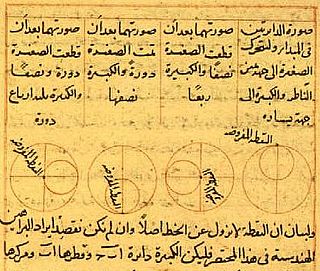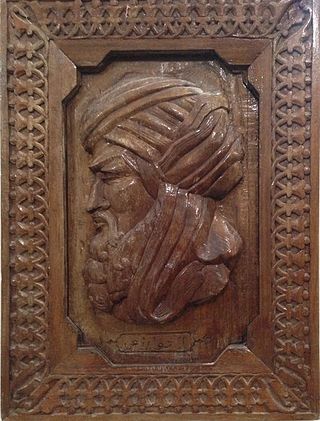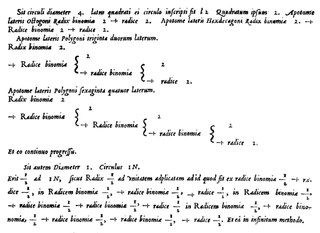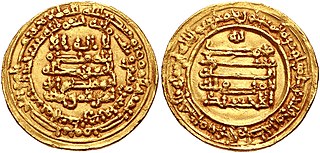Related Research Articles

Ibn Sina, commonly known in the West as Avicenna, was the preeminent philosopher and physician of the Muslim world, flourishing during the Islamic Golden Age, serving in the courts of various Iranian rulers. He is often described as the father of early modern medicine. His philosophy was of the Muslim Peripatetic school derived from Aristotelianism.

Year 1260 (MCCLX) was a leap year starting on Thursday of the Julian calendar.

Hermes Trismegistus is a legendary Hellenistic period figure that originated as a syncretic combination of the Greek god Hermes and the Egyptian god Thoth. He is the purported author of the Hermetica, a widely diverse series of ancient and medieval pseudepigraphica that lay the basis of various philosophical systems known as Hermeticism.
Bernardus Silvestris, also known as Bernard Silvestris and Bernard Silvester, was a medieval Platonist philosopher and poet of the 12th century.

Science in the medieval Islamic world was the science developed and practised during the Islamic Golden Age under the Umayyads of Córdoba, the Abbadids of Seville, the Samanids, the Ziyarids, the Buyids in Persia, the Abbasid Caliphate and beyond, spanning the period roughly between 786 and 1258. Islamic scientific achievements encompassed a wide range of subject areas, especially astronomy, mathematics, and medicine. Other subjects of scientific inquiry included alchemy and chemistry, botany and agronomy, geography and cartography, ophthalmology, pharmacology, physics, and zoology.

Muḥammad ibn Mūsā al-Khwārizmī, or al-Khwarizmi, was a polymath from Khwarazm, who produced vastly influential works in mathematics, astronomy, and geography. Around 820 CE, he was appointed as the astronomer and head of the library of the House of Wisdom in Baghdad.

In mathematics, Viète's formula is the following infinite product of nested radicals representing twice the reciprocal of the mathematical constant π:

Yuhanna ibn Masawaih, , also written Ibn Masawaih, Masawaiyh, and in Latin Janus Damascenus, or Mesue, Masuya, Mesue Major, Msuya, and Mesuë the Elder was a Persian or Assyrian East Syriac Christian physician from the Academy of Gundishapur. According to The Canon of Medicine for Avicenna and 'Uyun al-Anba for the medieval Arabic historian Ibn Abi Usaybi'a, Masawaiyh's father was Assyrian and his mother was Slavic.

The Ikhshidid dynasty was a dynasty of Turkish mamluk origin, who ruled Egypt and the Levant from 935 to 969. The dynasty carried the Arabic title "Wāli" reflecting their position as governors on behalf of the Abbasids. The Ikhshidids came to an end when the Fatimid army conquered Fustat in 969. Muhammad ibn Tughj al-Ikhshid, a Turkish mamluk soldier, was appointed governor by the Abbasid Caliph al-Radi.

John Norden was an English cartographer, chorographer and antiquary. He planned a series of county maps and accompanying county histories of England, the Speculum Britanniae. He was also a prolific writer of devotional works.
Abū Muḥammad ʿAbd Allāh ibn Muslim ibn Qutayba al-Dīnawarī al-Marwazī better known simply as Ibn Qutaybah was an Islamic scholar of Persian descent. He served as a judge during the Abbasid Caliphate, but was best known for his contributions to Arabic literature. He was an Athari theologian and polymath who wrote on diverse subjects, such as Qur'anic exegesis, hadith, theology, philosophy, law and jurisprudence, grammar, philology, history, astronomy, agriculture and botany.

Sufism is the mystical branch of Islam in which Muslims seek divine love and truth through direct personal experience of God. This mystic tradition within Islam developed in several stages of growth, emerging first in the form of early asceticism, based on the teachings of Hasan al-Basri, before entering the second stage of more classical mysticism of divine love, as promoted by al-Ghazali and Attar of Nishapur, and finally emerging in the institutionalized form of today's network of fraternal Sufi orders, based on Sufis such as Rumi and Yunus Emre. At its core, however, Sufism remains an individual mystic experience, and a Sufi can be characterized as one who seeks the annihilation of the ego in God.
This article presents lists of the literary events and publications in the 10th century.
Muḥammad ibn Ali ibn Muḥammad ibn Abd Allah, better known as al-Shawkānī (1759–1834), was a prominent Yemeni Sunni Islamic scholar, jurist, theologian and reformer. Shawkani was one of the most influential proponents of Athari theology and is revered as one of their canonical scholars by Salafi Muslims. His teachings played a major role in the emergence of the Salafi movement. Influenced by the teachings of the medieval Hanbali scholar Ibn Taymiyya, Al-Shawkani became noteworthy for his staunch stances against the practice of Taqlid, calls for direct interpretation of Scriptures, opposition to Kalam as well as for his robust opposition to various folk practices which he condemned as shirk (idolatry).
Abu 'Abd Allah Muhammad b. 'Abd Allah b. Masarra b. Najih al-Jabali (883–931), was an Andalusian Muslim ascetic and scholar. He is considered one of the first Sufis as well as one of the first philosophers of Al-Andalus.
Carol Jeanne Clover is an American professor of Medieval Studies and American Film at the University of California, Berkeley. Clover has been widely published in her areas of expertise, and is the author of three books. Clover's 1992 book, Men, Women, and Chainsaws: Gender in the Modern Horror Film achieved popularity beyond academe. Clover is credited with developing the "final girl" theory in the horror genre, which has changed both popular and academic conceptions of gender in horror films.
Abu Imran Musa ibn Isa ibn Abi 'l-Hajjal-Fasi was a Moroccan Maliki faqīh born at Fez to a Berber or Arab family whose nisba is impossible to reconstruct.

Shia Islam in Iraq has a history going back to the times of Ali ibn Abi Talib, the first imam of Shia Islam and fourth caliph of Sunni Islam who moved the capital of the early caliphate from Medina to Kufa two decades after the death of Muhammad. Today, Shia Muslims make up the majority of the Iraqi population. Iraq is the location of the holy cities of Najaf and Karbala, pilgrimage sites for millions of Shia Muslims. Najaf is the site of Ali's tomb, and Karbala is the site of the tomb of Muhammad's grandson, third Shia imam Husayn ibn Ali. Najaf is also a center of Shia learning and seminaries. Two other holy sites for Twelver Shia in Iraq are the Al-Kadhimiya Mosque in Baghdad, which contains the tombs of the seventh and ninth Shia Imams and the Al-Askari Mosque in Sāmarrā, which contains the tombs of the tenth and eleventh Shia Imams.

Sayyid Muḥammad Ṣiddīq Ḥasan Khān al-Qannawjī was an Islamic scholar and leader of India's Muslim community in the 19th century, often considered to be the most important Muslim scholar of the Bhopal State. He is largely credited alongside Syed Nazeer Husain with founding the revivalist Ahl-i Hadith movement, which became the dominant strain of Sunni Islam throughout the immediate region. Siddiq Hasan Khan was also a prominent scholarly authority of the Arab Salafiyya movement of the late 19th and early 20th centuries.
References
- ↑ Mendyk, Stan G. (1989). Speculum Britanniae: regional study, antiquarianism, and science in Britain to 1700. University of Toronto Press. ISBN 0-8020-5744-6.
- ↑ Palmer, Alan; Palmer, Veronica (1992). The Chronology of British History. London: Century Ltd. pp. 163–165. ISBN 0-7126-5616-2.
- ↑ Beckmann, Petr (1971). A History of π (2nd ed.). Boulder, CO: Golem Press. pp. 94–95. ISBN 978-0-88029-418-8. MR 0449960.
- ↑ Maor, Eli (2011). Trigonometric Delights. Princeton, NJ: Princeton University Press. pp. 50, 140. ISBN 978-1-4008-4282-7.